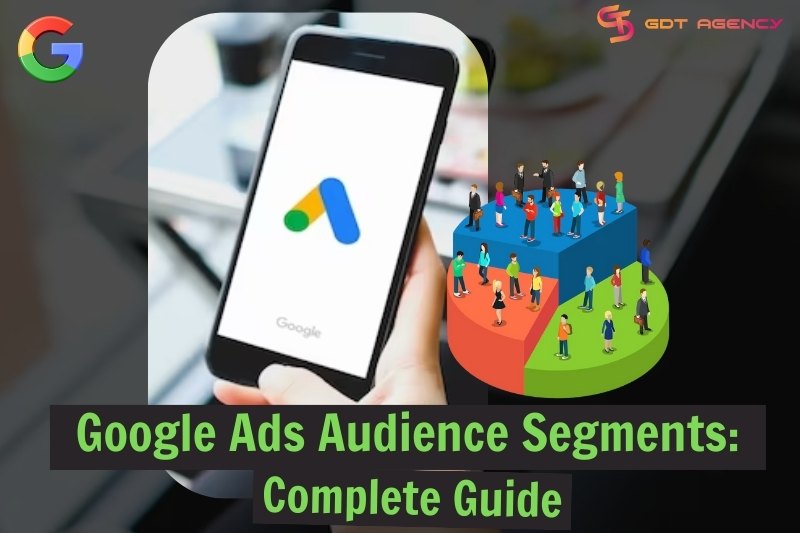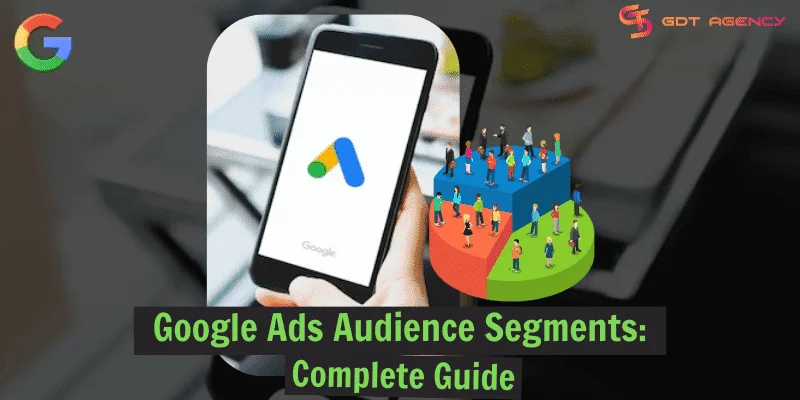Google Ads Audience Segments: Complete Guide In 2024

If you are trying to grow your ads on Google, you cannot miss this article about Google Ads Audience Segments. I actually received a lot of questions like “What is Audience Segment in Google Ads?”, “How to create Audience Segment in Google Ads?”, “Can I use all Audience Segment for every Ad Type?”, etc. To answer all your questions about Audience Segments, this article covers all the important things about Audience Segments in Google Ads, so stay tuned to the end.

What Are Audience Segments In Google Ads?
Google Ads Audience Segments are groups of people defined by specific characteristics that indicate potential interest in your products or services. You can also understand it simply as a tool for you to manage and create an audience to target in the future. These characteristics can include:
- Demographics: Age, gender, income, location, etc.
- Interests: Browsing habits, hobbies, purchase history, etc.
- Online behavior: Websites visited, apps used, videos watched, etc.
- Customer relationship: Existing customers, website visitors, app users, YouTube subscribers, etc.
What are Audience Segments in Google Ads?
By targeting Audience Segments in your Google Ads campaigns, you can reach people who are more likely to be interested in what you have to offer. This can lead to higher click-through rates, conversion rates, and ultimately, a better return on your investment (ROI).
Choose Audience Segments That Match Your Ad Types
Right now, Google Ads Audiences offers many different ad types and not all Audience Segments can be applied to each type. However, I have also compiled available Audience Segments with ad types in the table below. You should follow this information and choose the appropriate Audience Segments:

Specific Guide For Using Google Ad Audience Segments
My guide below includes step-by-step and breakdowns to help you understand how to use Google Ads Audience Segments. Stay tuned.
Step 1: Log in
First, you need to log in to your Google Ads account to get started.

Step 2: Add audience segments
Next, you need to click on “Campaigns” -> “Audiences, keywords, and content” -> “Audiences” -> “Add audience segments”.
You can also look at the image below for easy understanding:

Step 3: Select an ad group
After completing step 2, a window will appear with the title “Select an ad group”. You need to select the campaign and ad group to which you want to add Audience Segments. The image below will help you have a more specific view:

Step 4: Handling the “New audience” window
After performing step 3, you will see the “New audience” window. You need to process this entire window. I will analyze each item for you to understand clearly:
Section 1 – Audience name
You can name this Audience Segment. In my opinion, you should think of a name that is easy to remember and does not overlap with other Audience Segments.
Section 2 – Custom segments
You can choose an existing Audience or search for a new Audience in the search bar. In this section, when you select a segment, Google will recommend and add it to your Audience Segment based on the customer’s search behavior, application downloads or website behavior.
Section 3 – Your data
This part is whether you want to add to the Audience Segment people who have interacted with any ads, websites, landing pages or not. Normally, I would skip this part to find new audiences. But this part is very important in the Retargeting campaign so you also need to pay attention to it.
Section 4 – Interests&detailed demographics
In this section, you need to select appropriate audience information. If you’ve learned about your audience’s interests and demographics before, you can add it here. If not, you can also find more yourself using the “Browse” button and the search bar.

Section 5 – Exclusions
This section is related to Audience Segments that you really want to remove. If so, you can add it using the “Exclude remarketing lists” search bar.
Section 6 – Demographics
This section allows you to narrow your audience with specific demographic options such as gender, age, family information, monthly income.

After completing the 6 items above, you can press “Save” to complete.
>>> Related article: Google Ads In-Market Audiences: Unlock Your Sales Potential
How To Use Google Ads Audience Segments Effective?
To use Google Ads Audience Segments effectively, according to my Google Ads experience, you need to pay attention and know a few specific ways to find out information about target customers in advance.

Such information includes customer preferences, demographics, and behavior. Here, I’ll show you a few ways to find out this information quickly and accurately:
- Use AdTargeting: AdTargeting is a free tool for you to experience. It can help you find out demographic information quickly. If you want this tool to provide other related information, you need to pay an additional service fee.
- Google Analytics: This is almost a complete tool to learn and analyze customers. And you know what? It’s free. But of course, to use this tool, you also need to learn a lot of things, it will also take a lot of your time.
- Test campaigns: To own important information and customer behavior, you can run Google Ads with a low budget. Then save the Audience List to learn more about it in the future.
Advantages Of Using Audience Segments Google Ads
In the third part, I want to focus on analyzing the advantages of this tool. If you clearly understand the benefits below, you can easily apply this tool to running actual Google Ads. The following are the benefits of Google Ads Audience Segments in my experience:
- Instead of looking at a chaotic array, you can shine a light on each customer segment based on the data you collect.
- You can clearly see each segment type, their performance status, and their reach across each ad network.
- Nowadays, working with Google Ads Audience Segments List is extremely simple, this tool will help you quickly “catch” potential segments into appropriate ad groups and campaigns.
- You can also adjust the location and audience for optimal ad display and attract customer attention.
- Another advantage involves the need to upgrade your advertising account. More specifically, you can combine the use of Audience Segments with Google Agency Ad Account. Why? Simply because this account type contains all the best perks and features you can imagine. If you miss it, you’re missing out on a great opportunity to grow your revenue using Google Ads.
- Finally, you can name each segment to easily filter and report data as desired.

In general, using Audience Segments in Google Ads is extremely necessary if you want to increase conversions and increase ROI. With specific control over Audiences Lists, you can also deliver a number of suitable ads to audience groups with corresponding suitable characteristics.
Summary
In general, using Google Ads Audience Segments requires you to take the time to specifically research the audience you want to target. When you go deeper into research, you can also discover important characteristics and build advertising content that is suitable for them. This article focuses on guiding you on how to use Audience Segments, I hope it is useful to you in the long run. If you have questions related to paid advertising on social networking platforms, do not hesitate to contact GDT Agency to receive the fastest help.
Was this helpful?
You can contact us, with our experience in successfully deploying thousands of conversion advertising campaigns, GDT Agency confidently believes we can help you optimize effectiveness and maximize cost savings with advertising operations.








